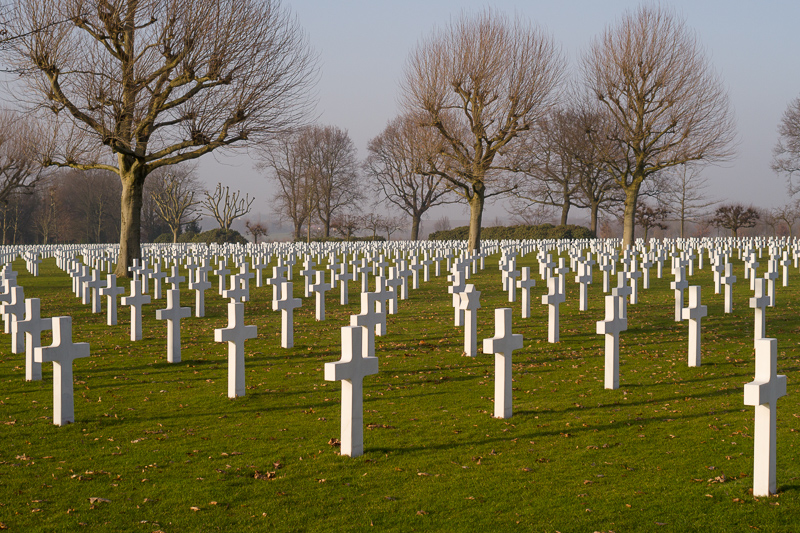
| MD 28mm 1:2 |
| MC Rokkor-X PG 50mm 1:1.4 |
| MD Rokkor 50mm 1:1.4 ø55mm |
| MD Macro 50mm 1:3.5 |
| MD Zoom 75-150mm 1:4 |
| MD 100mm 1:2.5 |
| MD Macro 100mm 1:4 |

The tonal scale and colours appeal to me in this picture and in many others taken with Minolta lenses. Lush colours and tonal scale, that's the best way I can put it. One thing lead to another and I am now the proud owner of many Minolta lenses, most of them to be considered as collectables and a few of them used regularly. And on these pages you can read how I like the lenses I have (or had, in some cases). I've had and still have lenses of other brands too, but at the end of the day I only use Minolta lenses alongside my native Panasonic ones.
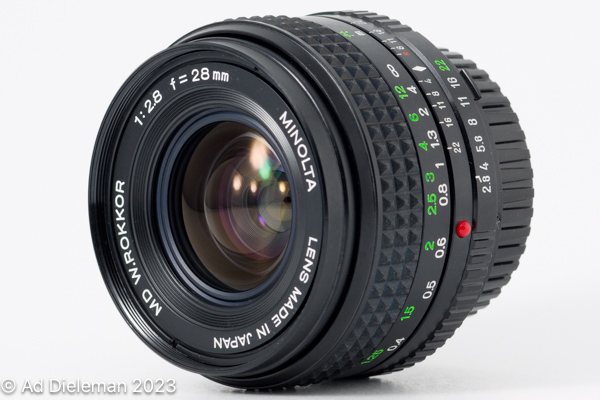
When I like what see, I take the lens with me for a test drive. I literally start walking with it and shoot all kinds of subjects to get an idea of what I can expect in somewhat varying circumstances. I do not pretend to really test a lens exhaustively, but I'm quite picky on things like centre and corner sharpness and adequate contrast. And ultimately I have to like what the lens does. As an example, I once tested and tried to use a Carl Zeiss Distagon 28mm 1:2.8 (Contax/Yashica mount) and found it to be the sharpest 28mm lens I had, it comfortably beat all my other lenses. However, I didn't like the tonal scale with its inky black shadows and the pictures didn't seem as colourful as I had gotten used to with the Minolta lenses. Colour balance was cooler too, which is fixable but still an inconvenience. I sold this lens and don't regret that decision so far.
The lenses described here are the ones in my collection that I like enough to use them for real pictures. And everything here relates to lens performance on Micro Four Thirds cameras.
Minolta MD 28mm 1:2
You won't see this one offered very often, and if so, prices can be extravagant. Patience is the keyword here. The lens is not well useable wide-open, contrast is too low and the pictures are flary with glowy features around the lighter image parts. Stop it down to f/2.8 and it's quite good for e.g. low-lights snapshots: contrast and sharpness are very good across the centre part of the image. Corner sharpness is not all that great and needs stopping down to f/5.6 to become good, although not equalling centre sharpness. Image rendition is superb, it's a prime example of what Minolta lenses can do in terms of colours and tonal range. I use this for landscapes, mostly at f/5.6 or f/8, and for indoor snapshots at f/2.8. |
Minolta MC Rokkor-X PG 50mm 1:1.4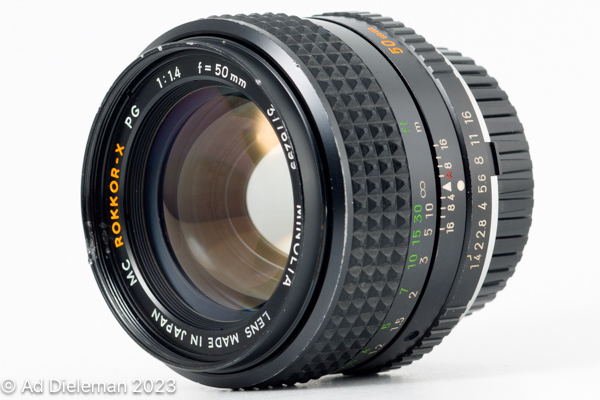
This is the only MC version of a Minolta 50mm 1:1.4 standard lens, and the only version of this optical design; the previous model was a 58mm and its successor, the MD Rokkor 50/1.4 (see below), had a different design as well. The sample shown here was sold in the American market, European versions are labelled as MC Rokkor-PG with all lettering in white. Wide-open the images are soft and flary with glowy features around highlights; the image is already very detailed however, even in the corners. At f/2 contrast improves, flare isn't an issue and sharpness is very good across the whole image. Contrast in the corners is a bit lower however. Overall, this is the best performance at f/2 of any 50mm lens I've ever seen, including the renowned Nikkor 50/1.2. Corner contrast picks up at f/2.8 and centre sharpness is excellent now. Stopping down further to f/5.6 something unexpected happens: centre sharpness is still excellent, but corner sharpness is just a little behind. This may be caused by a combination of focus shift and curvature of field. For that reason I prefer the MD Rokkor 50/1.4 for landscape work, where f/5.6 is my preferred aperture in general. However, its f/2 performance makes this lens the king for low-light work and it's one of the very few MC lenses that is actually worth having. |
Minolta MD Rokkor 50mm 1:1.4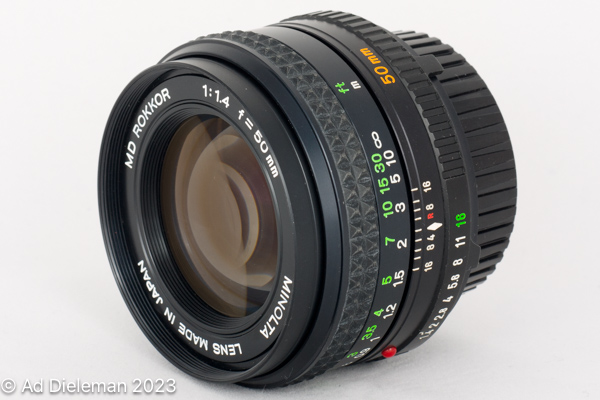
This is the first MD version of the 50/1.4 lens family. Its design is different from the MC Rokkor-PG 50/1.4 (or MC Rokkor-X PG, same thing). If you want this optical design, watch for the filter thread designation: it should be ø55mm or missing like in my sample. The MD Rokkor 50/1.4 with 49mm filter threads and the plain MD lenses have a different design with distinctly different performance as well. This lens gets regular use because it is excellent at middle apertures. At f/4 to f/8 it is sharp across the entire frame and contrasty. CA is absent, period. This is my best 50mm lens for landscape pictures. Wide-open all the detail is still there, but contrast is low and there is a veiling flare all over the image. At f/2 the very image centre gets more contrast, at f/2.8 that's true for most of the image. Bokeh isn't particularly pleasing with double-line features popping up in the out-of-focus areas at larger apertures. If you want a low-light lens, look elsewhere. The MC Rokkor 50/1.4, MD Rokkor 50/1.4 (49mm filter thread) or plain MD 50/1.4 fare better at larger apertures. |
Minolta MD Macro 50mm 1:3.5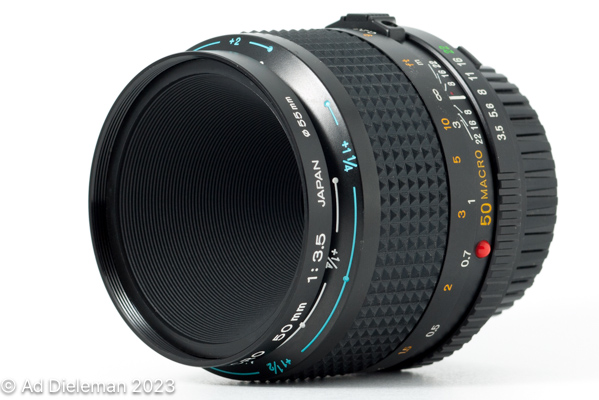
The latest incarnation of an optical design that has been essentially unchanged since its first inception, although Minolta is reputed to continually improve the coatings of its lenses. It focusses from infinity all the way to 1:2 reproduction ratio, typical for 50mm macro lenses of that era. It came with a matching extender, offering reproduction ratios of 1:2 to 1:1. There's no floating focussing involved. If you are after this lens, make sure you get it with the matching extender if you think you'll need it; prices for separate extenders can be on the high side while a lot of these lenses are offered with the extender included. I don't know why Minolta even bothered to include an f/3.5 stop, it's useless in my book. Fortunately the lens improves drastically on stopping down to f/5.6, where it is sharp and contrasty across the whole image area. It's best to focus at f/5.6 and stop down further if needed. Stopping down beyond f/11 is not recommended because then diffraction provides a woolly, lower contrast image. It is just a little bit less sharp than the excellent Micro-Nikkor 55/3.5 in its close-up range, but to the Minolta's credit it holds this performance also at longer range, it can safely be used for landscapes and as such doubles as a short telephoto lens, albeit with a slow useable f/5.6 aperture. I have a total of 3 versions of this optical design, a Celtic with rubber focus ring and an MC Rokkor-QF with hills-and-dales focus ring besides the one featured here. The Celtic lens has a different colour signature, but is beautifully sharp across the image (at f/5.6 of course) and the MC Rokkor-QF is not quite as good, its corners are visibly less sharp than the centre. Obviously these lenses are not all made equal. There isn't much to say about handling. It's light, focussing is smooth and I don't have any problems focussing at longer range despite the short travel between 3m and infinity. However, in macro work this lens is only a fallback for me when the Macro 100/4's field of view is too narrow, I usually prefer the flattened perspective of the 100/4, not to mention its supreme image quality. And for landscape work I usually pick the MD Rokkor 50/1.4. |
Minolta MD 75-150mm 1:4
A late offering in the Minolta range with a modest zoom range and speed, it only existed as a plain MD version. This is one of the few zoom lenses I consider useable on a Micro Four Thirds camera. Wide-open it's fairly sharp in the centre at 75mm and not so good at 150mm, with a small amount of purple fringing. Corners are less sharp and also show lower contrast. Stopped down to f/5.6 centre and corner sharpness is very good across the zoom range, going to f/8 hardly brings any improvement. There is some clearly visible CA and it requires different corrections for different focal lengths, which makes the autocorrection in Lightroom almost a necessity to get good results. I've never noticed distortion in architecture shots. Colours and tonal scale are up to the Minolta standard, although a little more subdued than e.g. the MD 100/2.5. The images of the MD 100/2.5 have more sparkle to them. Remarkably there seems to be little sample variation with this lens: I have had 4 samples of it and I wasn't able to select one favourite on optical performance; at the end of the day I pick the one with the smoothest controls. In terms of handling I consider this a tripod-only lens, I can't use it without one on my non-stabilized GH2; maybe an Olympus camera user will judge differently. Handling is very nice, the zoom action has enough resistance to prevent sliding up or down in vertical use and focussing doesn't easily move the zoom setting inadvertently. The zoom range itself didn't really appeal to me, until I started using it. It appeared to be a nice complement to the 50/1.4 in my bag, offering something like a variable 100mm lens. |
Minolta MD 100mm 1:2.5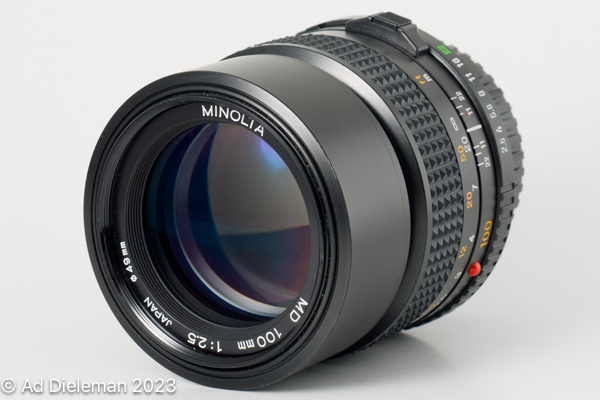 Minolta's latest version of the 100/2.5 range, supposedly unchanged from the late MC era; look for the minimum focussing distance, it's 1m for the latest
optical design. The plain MD version shown here has a nice two-piece integrated
lens hood, Rokkors came with a separate screw-on hood.
Minolta's latest version of the 100/2.5 range, supposedly unchanged from the late MC era; look for the minimum focussing distance, it's 1m for the latest
optical design. The plain MD version shown here has a nice two-piece integrated
lens hood, Rokkors came with a separate screw-on hood.Minolta surely knew how to make 100mm lenses, this is one fine piece of optics. It's already useable wide-open with just a touch of purple fringing and sharpness is good, but with a touch of woollyness if you will, and there is some flare around highlights. All these deficiencies have gone by f/4, where sharpness is very good, improving still a little further at f/5.6 where the lens really shines. There is hardly any difference between centre and corner sharpness across the entire aperture range. Even with Lightroom's autocorrection turned off I couldn't see any CA. The lens handles very well on my GH2, although hand-held focussing without image stabilization is a challenge with this focal length. |
Minolta MD Macro 100mm 1:4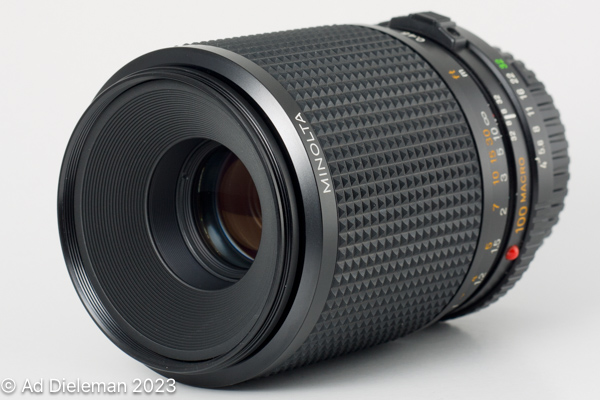
Get one. Still not convinced? OK, some more then about this great lens. It is suitable for close-up photography up to 1:2 and 1:1 with the extender that originally was sold together with the lens. It is however equally well suited for shooting at longer range. If you're after this lens, decide if you'll want the matching adapter as well, it is sometimes sold without one. My sample is a late version, the earlier Rokkor-designated 100mm 1:4 versions supposedly have the same optical design. The preceding 100mm 1:3.5 model is not as good as this one, and a good deal larger and heavier to boot. Notably contrast is lower, sharpness is almost as good when stopped down to f/5.6.This lens is fairly light despite its size, due to the relatively low maximum aperture and the compact optical construction it only weighs 385g. Its image forming qualities are almost beyond reproach; the only negative thing I found is a very slight purple fringing wide-open which disappears by f/5.6. It is very sharp and contrasty from the centre all the way into the corners. No CA, no distortion. Pick any aperture from f/4 to f/11 and you'll be assured of very high image quality; after f/11 diffraction takes its toll as usual. Bokeh is neutral, no bright lines around background highlights, but features are fairly well delineated, probably due to the lack of aberrations. The lens offers a comfortable working distance. It is a 100mm after all and the focal length does not shorten when focussed closer, it's a classical design where the whole lens group moves back and forth. Look at my pictures of lenses and mushrooms, most of them are made with this lens. |